Click to view our Accessibility Statement or contact us with accessibility-related questions






PRODUCTS YOU MAY LIKE
Trending Posts in Audiophile

robbertwilson
Shop Premium Women Golf Shirts at ApparelnBags
Be the trendsetter on the golf course with our stylish collection of custom polo shirts for women. Whether you're swinging your way to victory or simply want to rock that sporty chic look, our polo shirts for women are here to make you stand out. Moreover, we understand that style and quality go hand in hand. That's why, from golf shirts for women to long sleeve polo shirts for women , we handpick the best products to ensure you experience comfort and durability. Also, our women polo shirts offer the perfect blend of style and functionality, so you can focus on your game without compromising style. So, grab your favorite polos today. Remember, it's not just a game; it's a lifestyle, and our polos will help you ace both!
Apr 25, 2024

SsButerbal
Ringing in PC38X's
I recently got this headset, and wow is it good. My only issue is when certain people talk on discord, I can hear a really high pitched ringing. I fiddled with a bunch of settings, computer audio and discord, and nothing seems to solve the issue. It is primarily if not all in my right ear only. Is there something wrong with my headset, or was that ringing always there I can just hear it cause the headset is THAT good? I haven't had any issues with any other application, though I have yet to test if I can hear the ringing on a different version of discord, say on my xbox instead of my pc. Only other issue I've had is occasional static, but I can't tell if it's from the headset or the show/game/etc.
Apr 24, 2024
itsamepe
Sennheiser PC37X randomly goes bad after disconnecting the cable ?
Greetings, Yesterday I was using my headset like normal with my macbook, just listening to music and on a call with people like usual, and the headset was perfectly fine. The stock wire that came with the headset is extremely long and yesterday it annoyed me very much that it kept getting tangled with itself, so I decided to see if the cable is replaceable. I pulled out the cable from the headset and saw the adapter, and looked online for a replacement. Upon plugging it back in, the audio sounded extremely muffled and washed out. Im not sure what I did wrong to make it mess up like that as I've always taken good care of it, ive had it for about 2 years and its always just been chilling on my desk, but anywho I thought the cable just went bad and ordered a replacement. The replacement came, and the issue is still persistant, so I am not sure what the issue is I've tried multiple different headsets and the issue is not with the port, and I also tried it with my windows laptop and...
Apr 23, 2024

MrChiSox
Big changes coming to my tiny little music room, I've recently purchased a new stack. Currently figuring out where to locate it all and ordering up the necessary cables, it won't be too long before I'm up and running. I am now the proud owner of a brand new stack. It's a European brand called Earmen. Amp, DAC, Streamer & Linear Power Supply. It won't be long!
https://www.youtube.com/watch?v=MB15yM4UptQ
Apr 23, 2024

Briankan
Recommendation for my next headphone set? I have Koss 95x
Hey all, What would you recommend I get next and why? I have Koss ESP-95x electrostatic massdrop headphones. These are my first and only audiophile set. I love them. I think my only real requirements is $500 or less for the headphones and that they have a little more low end. I don’t need thump but these are really light on lows…but the experience is still awesome. Also any recommendations on an amp? I only have my electrostatic thingy. I am using the Topping D50 DAC. thx!!
Apr 22, 2024

Simthaniel
Rigs
Modded headphones with qudelix at the core
When I received the Qudelix 5K, I had already modified a pair of Superlux HD-681 headphones. I previously soldered my own balanced connections to the drivers, providing multiple ways to connect and...
Apr 14, 2024

brothamike
A decent set of IEMs
I am in the midst of a 300 hour burn-in but, I will say I am enjoying how this set sounds so far. Before I received these which was btw late by a few weeks, I purchased a Sony/Kimber Kable MMCX...
Apr 12, 2024
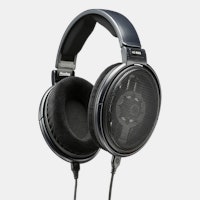
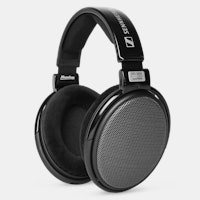

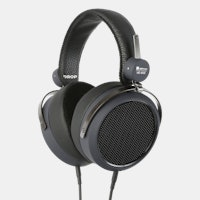
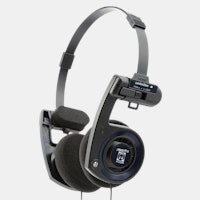

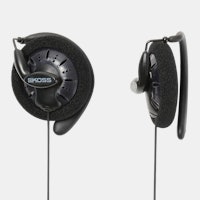
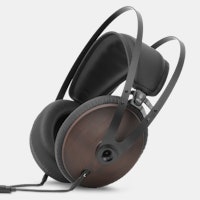
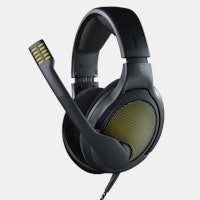
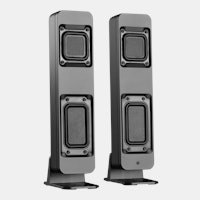
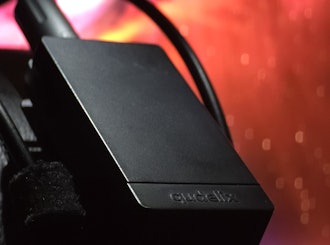
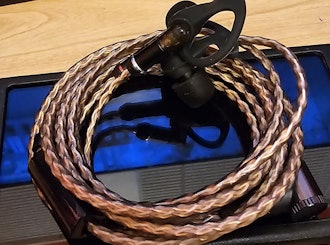
While $100 may sound expensive for a set of cables, it's all relative. If you happen to be one of the privileged few to own a Davinci DAC, you probably don't want to connect it with a coat hanger (and $100 is probably what you spend on breakfast). For those of you unfamiliar, the Davinci DAC is currently one of the top, if not the top of the line DACs in current production. It costs on the order of $30,000 and weighs in at about 60 lbs. (at least 2x the weight of an average receiver). If you can drop $30,000 on a DAC, you can easily spare the $100 for cables (hell, move up the line for the MA7's).
I agree with Tristor that the BJC cables are indeed good cables, there are plenty of supporters out there but here's the thing, if you are happy with your gear and don't want to drop $2000 on a new pair of monoblocs, why not drop $100 on some cables and see what happens? People are spending that on a chunk of steel to shave their face and 5x to 10x that for headphones which then need to be driven by an $800 amp...a $100 cable is going to break the bank? WTF?
Back to "wire is wire" debate - I found a nice article regarding cables and whether they make a difference (http://parttimeaudiophile.com/2012/09/22/the-great-cable-debate/). For those of you that don't want to read it all, it basically breaks down like this - cables do make a small difference which is measured and shown in a linked article here (http://www.empiricalaudio.com/computer-audio/audio-faqs/short-versus-long-cables). This article says that as long as you keep the runs short, there should not be serious signal degradation but better cables carry better measurable signals over longer distances. So, buy cheap interconnects and keep them less than 2 meters and keep your speaker runs under 4 meters with cheap speaker wire. So if you are thinking of using these for your headphone setup or home theater system, the effects may not be audible. If you have a dedicated hi fi system, it just might be, better signal at short distances...who knows?
The rest of the article discusses why double blind testing isn't really applicable. The basic rundown is that the majority of the population is not trained to critically listen. Therefore, the entire test is biased because you don't have a large group of people that are trained to hear the things that small adjustments can make.
Finally, since most of the massdrop group seems to be tuned into headphones, consider the ODAC and O2. This is a headphone DAC/Amp that is meaused to have properties that should provide near perfect reproduction. Yet people still buy the crack and Aune T1 and the $800 woo (?) tube amps that are offered. But the ODAC is measurably better, numbers prove it. This goes to show that people may prefer the sound of something that may not be perfect. Then, they take these amps and and use different tubes, but the circuit was designed for that tube and a 12AX7 is a 12AX7, right? So why do you have to pay $100 for one that's 40 years old with a rocket on it? Just an example, but perhaps cables can have the same effect.
Finally, for the other fancy MSE graduate. Consider that cables carry current and voltage and perhaps generate some heat. These may change the crystal structure of the copper wire over time and result in some electrical and sonic changes. Another thing to consider is the solder joint between the connector and the wire - if done by a sweatshop worker with little care, the joint may increase resistance through the line, causing possible sonic differences. Further, if you have worked in industry, you will know that there are various grades of copper, impurities may cause sonic differences as well (i.e. you can buy a 1 carat I2 diamond for $1000, but if you want to buy a 1 carat SI2 diamond, you need to drop $10,000). If your $10 cables are full of oxide and other crap, your signal will not be as good a 99.999% copper.
Just thought I would offer some other things to consider. One question for massdrop - why are these not offered in a balanced configuration as well?
Well then do a double blind test with audiophiles who have been trained for critical listening. It might not be practical to do so, but I'd just like to see something more than anecdotes from people who have a vested interest in justifying their purchase. No one likes to own up to the fact that they might have made the wrong choice for themselves, so people tend to justify it to themselves. I think that the PS4 vs XBONE or Apple vs PC debates have everything to do with this - people identify too much with their selected tech and get so emotional over consumer goods.
"Finally, for the other fancy MSE graduate. Consider that cables carry current and voltage and perhaps generate some heat. These may change the crystal structure of the copper wire over time and result in some electrical and sonic changes."
See, this is a physical cause and it could contribute to the sound for someone with sensitive ears. I'm not ruling out that these cables sound better than a 1m pair of shackers, I'd just like a more objective lens. Or failing that, less hubris in the marketing. Signal jumping from strand to strand? Sure, that *might* have a noticeable effect, as it is a physical system. But until you can answer with more than "don't know" for why the signal direction matters, maybe don't put that on the cables?
They do look like well made cables, and I do appreciate things that are well made. That in itself is worth paying more. I know that Morrow can't say "Buy these cables because they're well made and you might feel or hear that they're better sound quality but we can't really demonstrate that so *hand-wave* SCIENCE!", and the audiophile industry often runs on (what I feel are) overreaching claims. It's just unfortunate that there's often a lack of evidence to back up these claims.
And thanks to @Mark and MD for tolerating open discussion. I think that's the best choice for the community and I certainly appreciate it.